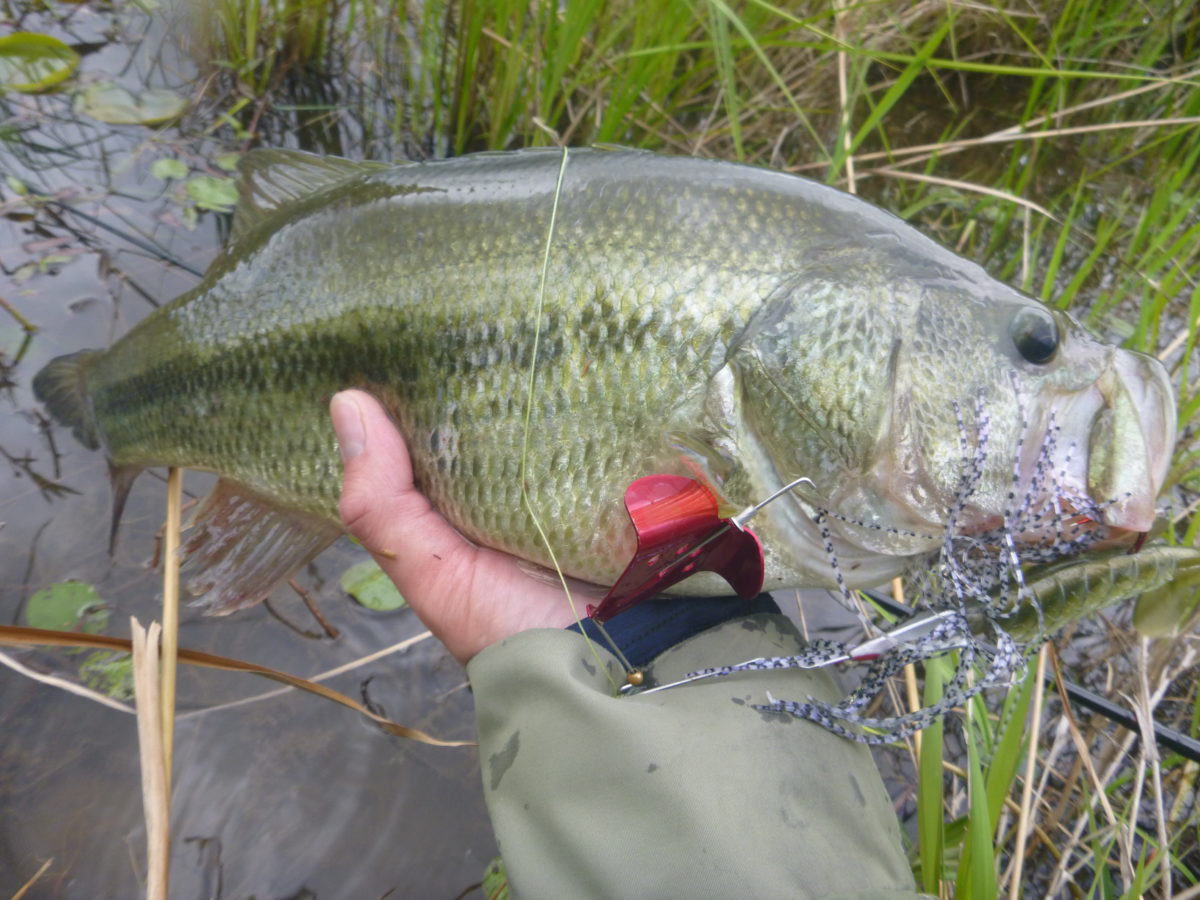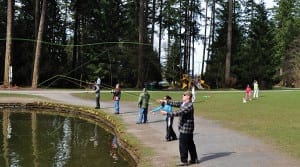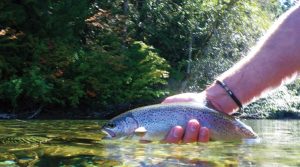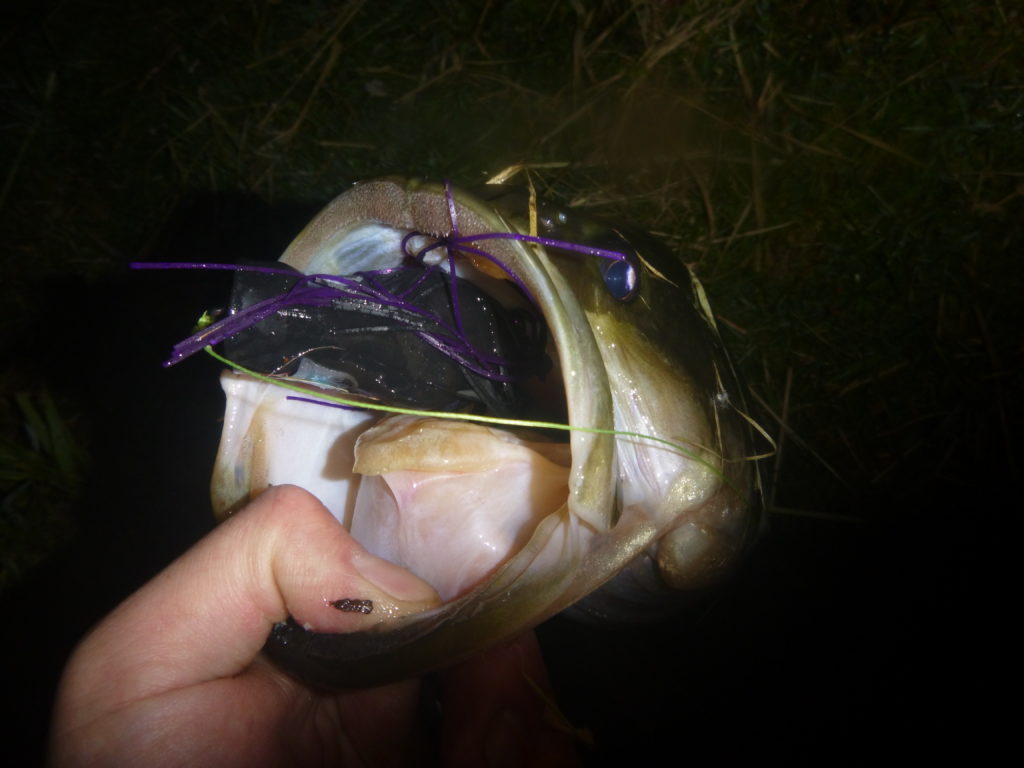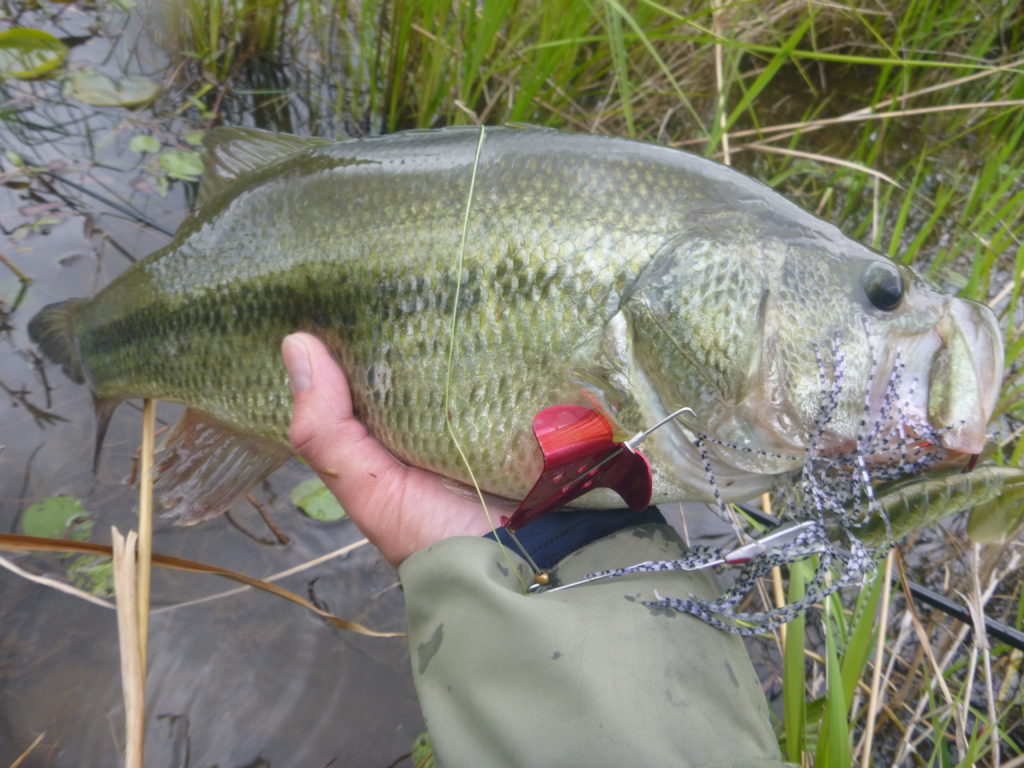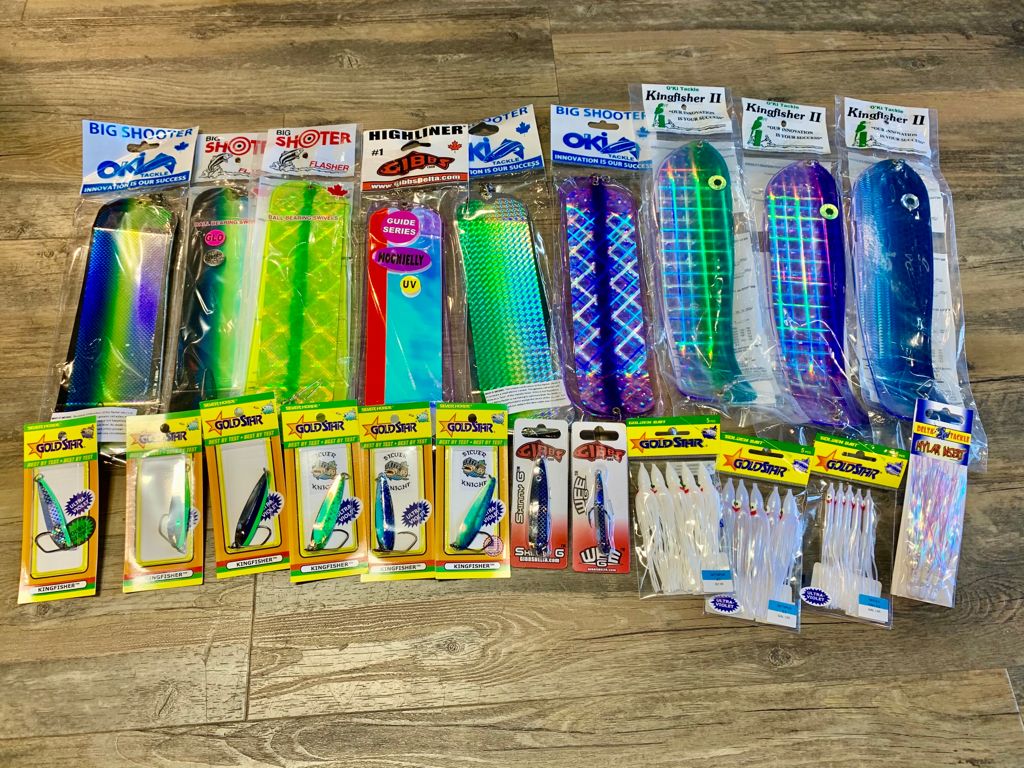OUTLOOK
What a week of weather! This little hot spell on the coast was well received, but it has tweaked a few fisheries. Unfortunately, it looks as though it will be back to the mid-teens for the weekend, but that is not exactly a bad thing for fishing.
We have heard reports from the interior that the lower elevation lakes in the 1800-2200ft range got very hot over the last 3 days and the fishing that had been red hot for the last 3 weeks has slowed. We have details on this and tips on how to deal with it in the interior lake report. Time to look at the higher elevation lakes!
With warm weather in mind, Alex has a piece on top water bass fishing. We’ve heard good reports over the last week with the warmer weather. He has some tips and concepts to share with you below.
On the river front, Taylor has a Capilano report. They have been randomly opening the dam and it has been hard to predict. Reports have been poor but still worth a look because things should be ramping up soon.
Last, but certainly not least, for our saltwater anglers, Jason has an update on the saltwater with hatchery coho being open for retention in most sub-areas of area 28 and 29.
Matt is tuning back in with the video report this week as an extra for missing you guys last week. He’s going to make up for it with a good one. He’s got more good books, flies and a little rant. We will let you guys guess what it is about. Check it out here:
CLASSES AND COURSES
Introduction to Fly Fishing
This course is specifically designed to give the new fly fisher the basic knowledge, casting skills and fly fishing strategies to effectively fish our local BC waters. The course is comprised of two sessions; a 3hr evening Zoom seminar and a 3hr casting session. The dates below show the seminar date first and casting date second.
Dates: Jun 16 & 20, July 14 & 17, Sept 21 & 26
Cost: $150.00
Seminar Time: 6:30pm – 9:30pm
Casting Time(s): 10am – 1pm or 1:30pm -4:30pm
Introduction to Fly Fishing Trout Streams
Stalking trout on mountain streams defines fly fishing. In this course we will teach you the fundamental techniques for fly fishing trout streams; dry fly fishing, nymphing, and streamer fishing. This course will get you as close to being Brad Pitt of River Runs Through It fame as you will ever be! The course is comprised of one 3hr evening Zoom seminar.
Cost: $50.00+GST
Date: Wednesday, June 23
Time: 6:30pm – 9:30pm
FRESHWATER FISHING REPORTS
Capilano River Fishing Report
Water levels have been very inconsistent on the Capilano this year, and that continues to make fishing a bit challenging. We’re heading into what should be prime time for the Cap but, with the river frequently running much higher than usual, it seems like fish have been shooting straight up into the Cable Pool or the hatchery without holding up in any of the lower pools.
Normally, the river runs fairly low at this time of year, save for when it rains a bunch. This year, however, the dam has been ramping up and down quite dramatically, so as of writing this report, the water level is almost 2m on the graph… and it hasn’t rained. Normally, after a period of dry weather, I’d expect to see it well under 1m, but this year has been anything but normal!
With levels running high, fish aren’t really sticking around and getting “stale” like they normally do, so there hasn’t really been an overwhelming need to dramatically downsize presentations, as fresh fish have been pushing through quite frequently. The issue has been finding them, or intercepting them between the mouth and the hatchery… a fresh coho can make it from the mouth of the river to the hatchery in a matter of hours if conditions are ideal, so that doesn’t leave much time for anglers to track them down. Higher water has also made the beach fishery less than productive… again, because the fish are booking it up the river instead of hanging out at the mouth. The anglers that have been reporting the best results have been spending most of their time in the upper sections of the river, showing up at “zero-dark-thirty” in the morning, and catching a majority of their fish before noon, which isn’t unusual. Gear anglers have been finding success floating roe, shrimp, blades, beads… the usual stuff, and fly anglers have been having luck on small olive buggers (“Cap buggers”), small muddlers, and stuff like that. Flies that you’d consider using for sea-run cutthroat trout on the beaches can often be equally as good for Cap coho.
As always, pay attention to your surroundings and keep your head on a swivel when fishing this system. The unpredictable water levels have the potential to catch unaware anglers off guard, so always have an escape route and be ready to beat it if things get sketchy.
Taylor Nakatani
STILLWATER FISHING REPORTS
Topwater Bass Feature
It is June and even though it’s technically still Spring, it definitely feels a lot like Summer. With this heat and sunshine, we can expect some great topwater bass fishing. This is, in my opinion, the most exciting way to catch a bass. While it may not necessarily be a hog hunting technique the beauty is that it appeals to fish of all sizes. Regardless of whether it’s 6 inches or 6lbs, you will never forget a bass that comes to the surface to smash your lure.
In saying that, not all topwater lures are the same and not all days are great for topwater. It even varies from hour to hour. There is a saying in the fly-fishing world that a dry fly works about 10% of the time. This saying applies to topwater “bassing” too. As such, keeping expectations realistic is a good idea when approaching this style of fishing but, when it’s on, it sure is magical.
There are a few different types of topwater lures out on the market today. I will touch on a couple of basic ones for this report. Keep in mind this is definitely not a definitive list; just a starting point for those looking to get in some topwater action.
The first one I would like to talk about is also probably the most versatile, and that would be the hollow-body frog. Hollow-body frogs consist of hooks that run flush to a collapsible rubber body. This means it is completely weedless and can be thrown just about anywhere and still come out unscathed. They excel at fishing laydowns, lilypads, and matted grass; basically, anywhere that a lure with an exposed hook would get fouled up. There are two types: a walking style frog and a popping style frog.
A walking frog literally “walks” side to side with proper rod twitches and is incredibly useful for fishing a very specific opening where you know the strike zone is limited.
A popping frog has a cupped mouth and can be used to create a lot of commotion in scarcer structure and on windy days when the water’s surface is a little rough. The key with hollow-body lures is that you need the fish to crush the rubber body down before you can set the hook, and this is typically the frustrating part with frogging. If you set the hook right when you see the blow-up you will miss them every time. If your line is slack during the blow-up, lower your rod tip and start to pick up some of that slack while counting to three. On three, swing as hard as you can over your shoulder. If you happen to get blown-up on while walking the frog and you suddenly feel the weight of the fish, just set it instead of counting. Alternatively, if you get a good visual that the frog is gone, that is another indicator to swing. It’s a bit tricky to get the timing down as it is so tempting to reef on the rod when you see the bass come up for it but, trust me, when I say it is worth waiting for that hook set.
The second type of topwater lure that I really like is a buzz bait. A buzz bait has a large prop that churns up the water when you retrieve it and typically has a skirted body. It is great for covering water quickly and drawing up reaction strikes. Some of the most vicious blow-ups I’ve had have come on these lures. They are simple to fish too; just chuck it out and crank it in just fast enough to keep the prop churning the surface. You should be able to hear them working too. These lures are not technically weedless but can be run through sparse cover. Buzz baits excel when there is a bit of chop on the water as the disturbance it gives off will still be trackable through the waves.
The third category of topwater lures is the popper. The popper is an old school lure that consists of a wood or plastic body and a cupped mouth and usually sports one to three treble hooks. They are designed to kick up a lot of water when “popped” along the surface and are fantastic for fishing open water and covering weed edges or transitions. They are not weedless in the slightest but the hookup ratio is fantastic on these. In addition, you can pause them for long lengths of time between pops and can be used to fish a particular spot more thoroughly for more sluggish fish.
There are a bunch of others I haven’t talked about but the three styles I have mentioned will get you started. Keep in mind that no topwater lure will work in the wrong conditions, so in addition to picking the right lure for the job you will need to be fishing the right day. Topwater typically turns on when the water hits 50-55 degrees and is best in low light conditions. Not to say that you can’t catch a topwater bass on a blazing hot sunny afternoon but, they will be much more likely to come up to the surface under a bit of cover. That means darker days or first light/last light are your most opportune times.
If you have any questions regarding this fishery swing by the shop and we would be happy to help.
Alex Au-Yeung
Interior Lakes Fishing Report
I’m sure you’ve probably been able to guess but, it’s pretty hot out in the interior. We’ve heard a really mixed bag of reports with some of the lower elevation lakes starting to go into the dreaded summer doldrums while other higher elevation lakes are fishing fantastic. There has also been a mixed bag of productive fishing depths as some people have been doing fantastic in 5-8 feet of water while others have had to push out to that 30 ft depth. Lakes that are >2200 ft are likely to be the most productive at the end of the day since the water temperatures won’t be in those high 60s. The majority of best temperatures for hatches occur in the 52-62 degree Fahrenheit window.
Saying all that, having a full selection of chironomids, mayflies, caddis, damsels, and dragonfly patterns starts to become imperative as we move through June/July in the Interior. I’ve started to see summer duck pupae in throat samples meaning that the water is quickly warming up. You’ll typically see a mixed bag of size 10-16 chironomids at this point of the year so having limeys, summer ducks, and chromies are all essential since there’s really no guarantee what the fish are keyed in on. Other patterns like Brian’s Marabou Wigglers (BMWs) and Damsel Leech Things (DLTs) are great for getting you through the toughest of bug hatches as they’re great at imitating a multitude of prey items. We’re still seeing pretty cold weather fronts up in the Cariboo, which typically means mayfly hatches. Cloudy days almost always bring mayfly hatches so having pheasant tail nymphs (PTNs) in brown, tan, grey, olive, and black in sizes 12-16 are a great addition too. Flashback PTNs are wicked patterns too as mayflies have a gas build-up similar to chironomids while emerging. I’ve personally found that the best hatches happen in 12-18 ft of water. They’re always my go-to patterns when it’s typically too cold for a chironomid hatch or I’ll fish them in those 9-1 PM or 5-9 PM timeslots if a chironomid hatch hasn’t happened yet or is finished. I’ll fish these presentations on either a hover or a midge-tip line. They move slowly up through the water column at a shallow angle so try and do your best to keep that angle consistent.
Sterling Balzer
SALTWATER FISHING REPORTS
Vancouver Saltwater Salmon Fishing Report
In this week’s report we are going to focus on coho. Hatchery coho, with a missing adipose fin, are open for retention in most sub-areas of area 28 and 29. Consult the area 28 and 29 regulations and area maps for more details.
Remember coho retention is for hatchery only, 30 cm or greater, and coho have white gums and only a few spots on their tail, usually on the upper part of it, if any at all. Chinook have black gums and their tails generally have quite a few more spots. Here are some good pictures from our friends to the north.
Pacific Salmon Marine Phase Identification
There have been a few coho caught so far, but it is still a bit early. Things usually pick up mid to late June and some of the first good catches are off South Bowen from Cowan to Roger Curtis, out on The Hump, and also out in the middle of the Strait of Georgia on tidelines. Finding these fish is usually half the battle. Once you do, they are usually fairly co-operative and can provide some fast and fun action. A little later on in the summer we can start to expect more fish along the West Van shoreline.
Most of the time coho are surface orientated and productive depths can be as shallow as right under the surface at first light down to 65 feet, but 25-45 feet is usually the sweet spot on most days. For tackle, more reflective flashers with a chrome or UV finish will work well. We fish a lot of flashers with white glow tape for chinook, because we are fishing deep, but time to adjust for these shallow water conditions to more flash. The same can be said for spoons. Nickel or silver finishes, not glow finishes, tend to work the best. Hootchies are also very productive, usually a white or white UV hootchy with a mylar insert. Try a 4 to 6 foot leader on your spoon and a 28 inch to 32 inch leader on your hootchy. Don’t be afraid to pick up the pace a bit either. Coho like lots of action and a faster, rather than slower troll is the way to go.
You might hook a few chinook while you are targeting coho. If that is the case, we recommend carefully releasing the chinook on the side of the gunnel as currently there are no fishing for chinook regulations in place. By this we mean it is better for the fish to have you lean over the side of your boat, over the gunnel, pop the barbless hook out, and it’s on its way. Netting the fish and bringing it in the boat to take the hooks out, then releasing it, is not as ideal.
Prawning has slowed down as the commercial fleet has been open for a while. Crabbing has been pretty decent.
See you in the shop or on the water,
Jason Tonelli


